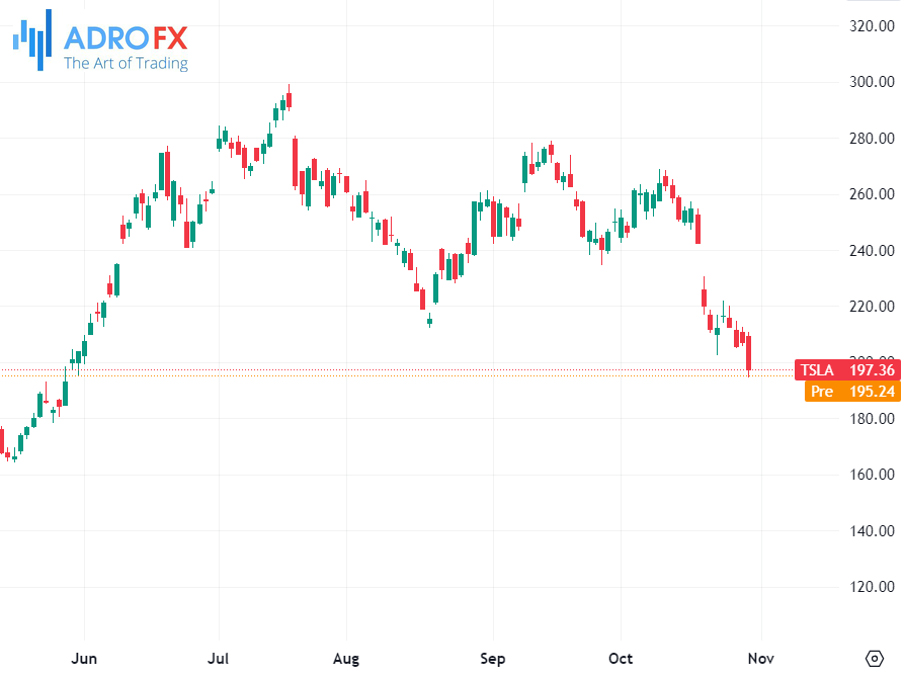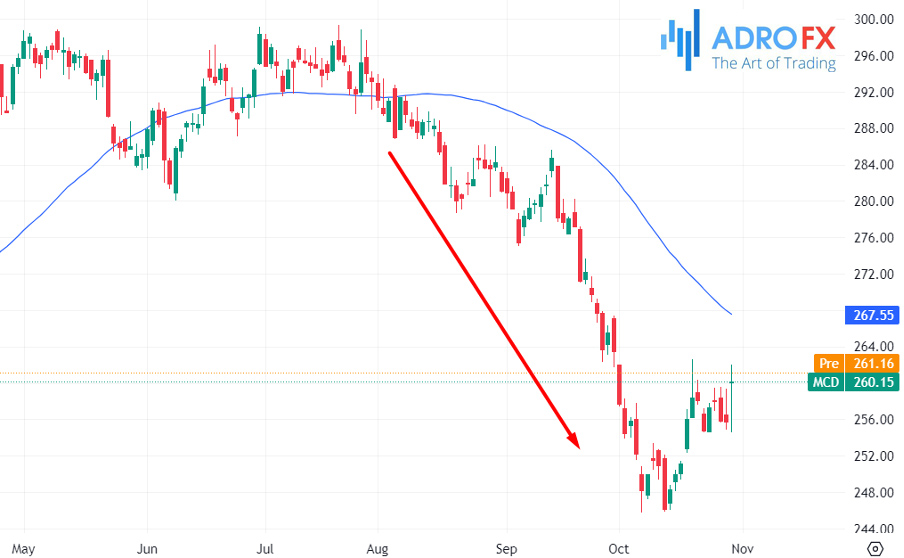Mastering Short Selling: Strategies and Best Practices

Short selling, a distinctive trading approach, offers investors and traders the opportunity to profit from declining asset prices. The process, while less conventional than buying, entails borrowing shares from an exchange and subsequently selling them, with the goal of capitalizing on falling prices. As the asset's value diminishes, the trader repurchases it and returns the borrowed shares, resulting in a profit. This article provides an in-depth exploration of short selling, offering insights into the fundamental mechanics and strategies behind this trading method. It also emphasizes the importance of staying informed, analyzing volume, implementing protective measures, adapting to evolving market conditions, and targeting overvalued assets.
What Is Short Selling and How Does It Function?
Short selling is a trading approach that involves speculating on an asset's price declining for a specified duration. The process is relatively straightforward for traders and investors: by clicking the "sell" button, they initiate the short sale, leaving the execution to the broker.
Short selling diverges from the conventional buying method. The process unfolds by borrowing shares from an exchange and subsequently selling them or converting them into cash. As the asset's price decreases, the trader repurchases it and returns the borrowed shares.
For instance, suppose you have $10,000, and a stock is trading at $50. In this scenario, you can borrow 200 shares. If the stock's price drops to $30, you can buy it back for $6,000, returning the shares to the exchange, thus realizing a $4,000 profit.
What Is a Short Squeeze?
Short selling is an appealing strategy for its ability to generate profits in various market conditions, yet it carries significant risk. In the earlier example, should the price surge to $70, you would need to purchase shares valued at $14,000, resulting in a $4,000 loss.
The most daunting hazard associated with short trading is referred to as a "short squeeze," an occurrence when the asset's price experiences a sharp upturn. Since the price of a stock has no upper limit, short selling can expose traders to potentially unlimited losses.
In our previous example, if the stock price soared from $50 to $1,000, you would be required to buy shares amounting to $200,000, resulting in a substantial loss exceeding $190,000.
While such situations are relatively rare, they remain possible. For instance, individuals who shorted GameStop during the meme stock craze fell victim to a significant short squeeze.
Short Selling Strategies: Profiting from Market Downturns
Short selling entails several strategies to profit from falling stock prices or other financial assets. Here, we explore four main approaches to short selling.
- Shorting a Reversal
This contrarian approach involves shorting a stock transitioning from an uptrend to a downtrend. Multiple methods can be used to identify potential reversals. Technical indicators like moving averages and Bollinger Bands help predict trend shifts. A "death cross" is a prominent moving average strategy, involving the crossover of a longer and shorter moving average. Chart patterns, such as head and shoulders, rising wedges, and double tops, can also signal bearish trends. Reversal candlestick patterns like an inverted hammer, evening star, and bearish engulfing provide further insight. For instance, if a triple-top pattern forms, as in the Tesla chart below, it could indicate a bearish breakout:

- Shorting an Existing Downtrend
In a trend-following strategy, you initiate a short trade when an asset is already in a downtrend. The aim is to capitalize on the asset's continued downward trajectory, assuming the trend will persist. Employing a moving average is an effective technique. If, for example, a stock breaks below a 50-day moving average, you can short the stock and hold the position as long as it remains below the moving average, exiting only if it surpasses this threshold.

- Shorting a Breakdown after Consolidation
In this approach, you enter a short trade when an asset is consolidating or moving sideways. A period of consolidation often precedes a potential bearish breakdown. To implement this strategy, consider placing a Sell Stop order just below a strong support level. When the asset's price drops below this support level, the short trade is executed, allowing you to benefit from the ensuing decline. - Shorting a Pullback
The final strategy is a somewhat riskier endeavor. It involves initiating short trades while an asset is in an uptrend, with the goal of profiting from short-term pullbacks. However, there are inherent risks in shorting during an uptrend. The asset may continue rising for an extended period, and pullbacks can be short-lived, limiting profit potential.
Each short selling strategy offers a unique approach to navigating market fluctuations, allowing traders to profit in different conditions. Careful consideration of market conditions and risk tolerance is essential when choosing the most suitable strategy for your trading objectives.
Effectively Short Selling: Best Practices and Strategies
Short selling, a trading strategy aimed at profiting from falling prices of stocks and financial assets, requires careful execution and attention to key practices.
- Stay Informed with Market-Moving News
Keep a vigilant eye on news that has the potential to impact the market, whether pertaining to specific companies or broader economic conditions. Significant news events such as geopolitical developments (e.g., Russia's invasion of Ukraine impacting oil and gas stocks), earnings reports, mergers and acquisitions, FDA approvals or denials, management changes, and product recalls can have a substantial influence on asset prices. Valuable sources for staying updated include social media platforms like Twitter and StockTwits, financial news outlets like CNBC, Bloomberg, Wall Street Journal, and Financial Times. - Analyze Asset Volume
Pay close attention to the trading volume associated with an asset, as it provides insights into market trends and potential reversals. Examining volume can help you gauge the strength of a reversal, providing essential information for your short selling strategy. - Implement Stop Loss and Trailing Stop Orders
Protect your short trades by using Stop Loss and trailing stop orders. These safeguards prevent significant losses by automatically triggering a trade closure if an asset's price moves against your position. For example, if you've shorted an asset at $20, setting a Stop Loss at $22 will halt the trade at that price, limiting potential losses. - Adapt to Changing Conditions
Be ready to adjust your position when market conditions shift. For instance, consider the case of Bill Ackman, who famously shorted Herbalife, alleging it was a pyramid scheme. However, when regulators investigated and fined the company, leading to a shift in strategy and recovery of the stock, Ackman chose to exit his short position. Adapting to evolving conditions is vital to managing risks effectively. - Target Overvalued Hyped Companies for Long-Term Shorts
If your goal is to hold short positions for an extended period, consider targeting overvalued companies that have become the focus of market hype. For instance, during the rise of new hot sectors like electric vehicles (EVs) and environmental, social, and governance (ESG) investments, you can identify highly valued stocks in these sectors and initiate short positions when they are at their peak.
By adhering to these best practices and strategies, you can enhance your ability to short sell stocks and other financial assets effectively while managing risks and capitalizing on market opportunities.
Conclusion
Short selling, when executed strategically and with a keen understanding of market dynamics, can serve as a valuable tool in a trader's toolkit. Whether capitalizing on price reversals, following existing downtrends, targeting breakdowns after consolidation, or shorting pullbacks, each strategy offers distinct advantages and requires careful consideration. Furthermore, adhering to best practices such as staying informed, analyzing volume, implementing Stop Loss orders, adapting to changing market conditions, and identifying overvalued assets can significantly enhance the effectiveness of short selling. By mastering these techniques and incorporating them into your trading approach, you can navigate market fluctuations with confidence and achieve success in short selling.

About AdroFx
Established in 2018, AdroFx is known for its high technology and its ability to deliver high-quality brokerage services in more than 200 countries around the world. AdroFx makes every effort to keep its customers satisfied and to meet all the trading needs of any trader. With the five types of trading accounts, we have all it takes to fit any traders` needs and styles. The company provides access to 115+ trading instruments, including currencies, metals, stocks, and cryptocurrencies, which make it possible to make the most out of trading on the financial markets. Considering all the above, AdroFx is the perfect variant for anyone who doesn't settle for less than the best.









